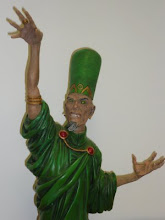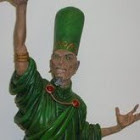
This is a very enjoyable story centering on the struggles between Carthage and Rome as they clashed over dominance in the Mediterranean. Following a Roman victory over Carthage, the Roman fleet is is dispatched to follow up. They suffer a crushing defeat at the hands of the Carthaginians. Unknown to the Romans this is the start of a very ambitious plan by Carthage to challenge Rome directly. Atticus, the captain whose actions in the Roman defeat saved a great many men also made him a pawn in the ambitious games of power by the senior politicians in Rome. The story has a very large cast moving swiftly from Rome to Carthage to the open seas and the threads of the various plots involving the cast are carefully and skillfully woven together. The action is extremely well described, the cast are lively and very credible, the clashing agendas and plots are well revealed the historical context is very well filled in.
John Stack manages to move a very large cast through a lot of action without ever dropping the narrative threads or having his cast be less than clearly individual. The context for the actions, the overall political structures in both Carthage and Rome and the competition between them is extremely clearly laid out. It is revealed through the actions of the cast rather than with lengths of exposition and this means that the motives of the cast drive the action is a clear and meaningful way. The final brutal collision between the two navies is superbly done, it is never crowed out with detail. Engaging and enjoyable, a first rate historical adventure story.












